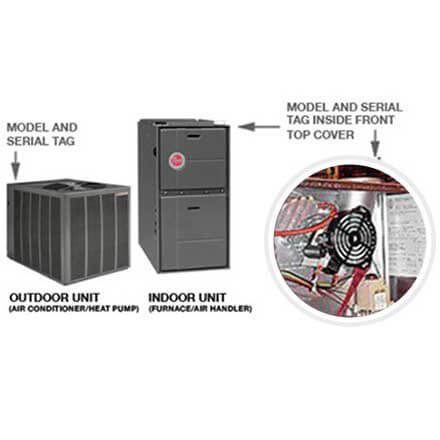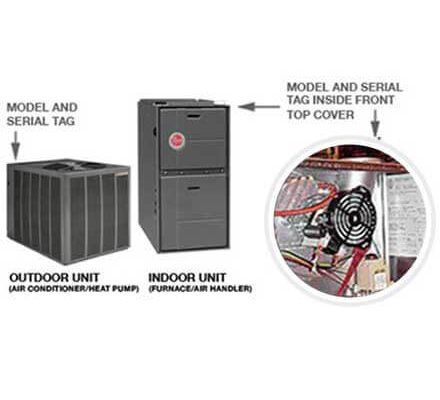
Here’s the thing: many folks make simple blunders when trying to register their Rheem HVAC system. Sometimes it’s a missed serial number, trouble pairing online forms with physical stickers, or confusion over who’s supposed to do what—the installer, the homeowner, or the dealer. If you’re just moving into your first home or swapping out an older system, all those steps, codes, and time windows can feel like a maze. Let me walk you through the most common mistakes, so you can avoid frustration and make sure your Rheem warranty is safe and sound.
Not Registering Within the Required Time Window
One of the most common mistakes with Rheem HVAC system warranties is missing the registration deadline. In most cases, Rheem gives homeowners about 60 days from the installation date to complete registration and unlock those extended warranty benefits. If you try to register too late, your system might only qualify for the base warranty—instead of those extra years you’ve heard about.
Most people assume the contractor handles this for them, or they just forget with all the chaos of moving or renovating. But here’s the reality: even if your contractor says they’ll do it, it’s always a good idea to double-check. Imagine it like setting up a new smartphone—if you don’t sync it to your account within a certain time, you lose access to helpful features and protections. Registration works about the same way.
Pro Tip: Mark your installation date on your calendar, and set a reminder at the 30-day mark. That way, you’ll have plenty of time to track down any missing paperwork or codes, and you won’t be scrambling at the last minute.
Entering Incorrect Serial or Model Numbers
You might be wondering, “How hard could a number be?” Honestly, you’d be surprised. Entering the wrong serial or model number is a classic slip-up when registering Rheem HVAC systems for warranty coverage. The codes can be long, filled with confusing characters, or hidden somewhere tricky on your unit.
Here’s what trips people up:
- Mixing up letters and numbers (like mistaking a zero for an “O”)
- Reading from the wrong sticker (air handlers, coils, and compressors often have their own unique labels)
- Trying to register using the packaging instead of the actual HVAC unit
Be sure to double-check the label directly on your installed equipment—not just the shipping box. And if you need to pair the registration form with the right numbers, grab your phone and take a clear photo of each sticker. That way, you can refer back if the website throws an error.
The right code unlocks your warranty benefits. Get it wrong, and you’ll wind up troubleshooting with customer service, trying to prove your system is what you say it is.
Using the Wrong Name or Address
A warranty is basically an agreement between you and Rheem—so your personal info needs to match up. Some people fill in the registration form with nicknames, abbreviations (“123 Main” instead of “123 Main Street”), or use the installer’s info instead of their own. This can cause headaches if you ever need to reset or claim your warranty.
Remember, ownership matters. If you register with the wrong name or address, you could run into trouble proving your purchase, especially if you move or sell your home. It’s like trying to sync your favorite app with the wrong email address—you’ll never see the benefits.
Always use your *full legal name* and the actual install address, not a P.O. box or mailing address. And if your home recently changed hands, make sure the new homeowner updates the details with Rheem, too.
Assuming the Contractor Registered Your System
Here’s a scenario: the installer wraps up, shakes your hand, and says, “You’re all set.” Many folks take that at face value, thinking the warranty syncs automatically. But honestly, that’s not always true.
Rheem’s policy often requires the *homeowner* to register the HVAC system online or by mail. Some contractors will offer to do it as a courtesy, but it’s not guaranteed. Even if your installer submits the paperwork, an error in the code or address could void your claim later. The reality is, you’re responsible for making sure the registration was completed—and that it was done right.
Steps to check:
- Ask your installer for a confirmation email or registration code
- Visit Rheem’s warranty site and look up your unit using the serial number
- If something doesn’t match, call Rheem support to troubleshoot before time runs out
Think of it like setting a password for a new account. The tech might help you, but you need to test it out yourself to make sure you can log in later.
Missing Required Documentation
Registering your Rheem HVAC system isn’t just about filling out an online form. Sometimes, you’ll need to upload or mail proof-of-purchase, installer details, and even warranty codes. Skipping one of these steps can delay or deny your coverage.
Common mix-ups include:
- Not attaching the sales invoice or proof of installation
- Uploading blurry or incomplete photos of your serial number sticker
- Forgetting to include contractor license information if required
If Rheem can’t confirm when and where it was installed, your warranty could be stuck in limbo. Before you start registration, collect all your paperwork in one place—think of it like prepping for a road trip, making sure you have your ID, insurance, and keys before hitting the highway.
Overlooking Product Types or Additional Components
Rheem HVAC systems can include air conditioners, furnaces, air handlers, and heat pumps—sometimes all working together. Here’s where folks get tripped up: not every part is automatically covered just because you registered one component. Each product—condensing unit, coil, thermostat—might need to be registered separately, with its own serial number and paperwork.
“I thought registering my AC meant the whole system was covered.” Not so fast! If you only register the main unit and skip the coil or handler, you could be out of luck if *those* parts ever fail.
When registering, check every box for accessories and paired components. If you’re not sure which items need to be included, ask your installer for a complete list. Think of this like syncing your smart home system—if you don’t pair every device, some features just won’t work the way you expect.
Not Creating (or Remembering) an Online Account
It’s easy to fill out a form in the moment and forget about it. But when it comes time to file a claim, manage your warranty, or troubleshoot your Rheem system, you’ll want to log in to your account. Skipping account creation or losing your login is a recipe for frustration later.
Your Rheem warranty account lets you:
- View and manage all registered products
- Update ownership info if you move
- Find warranty codes and documentation instantly
Treat this like setting up remote access for your smart thermostat. You wouldn’t want to play “guess the password” the night your heat goes out. Write down your username and password, or sync your account details with a reliable password manager.
Ignoring Follow-Up Emails or Confirmation
So you’ve filled out every field, attached the right photos, and hit “submit.” Done, right? Not quite. Many homeowners miss the final step—actually confirming their registration went through.
Rheem usually sends a confirmation email or a registration code once everything’s processed. If you don’t get this, it could mean your sync with their system didn’t work—or that you need to reset something. Don’t just assume everything’s fine. Double-check your email (including spam or junk folders), and save any confirmation for your records.
If weeks pass and you hear nothing, reach out to Rheem’s customer service to troubleshoot. This small step could save you hours of hassle later, especially if you need to claim on that warranty when something unexpected happens with your system.
At the end of the day, registering your Rheem HVAC system for warranty isn’t rocket science—but it does take a careful eye and a few minutes of your time. Treat registration like the final step in setting up your comfort system, right up there with syncing your remote or setting the first temperature. If you avoid these common mistakes—missing the time window, messing up serial numbers, forgetting components, or losing confirmation—you’ll have peace of mind knowing your Rheem system is protected for the long haul. A little attention now saves you stress and troubleshooting in the future—so you can relax and let your HVAC do its job, no code-cracking required.
